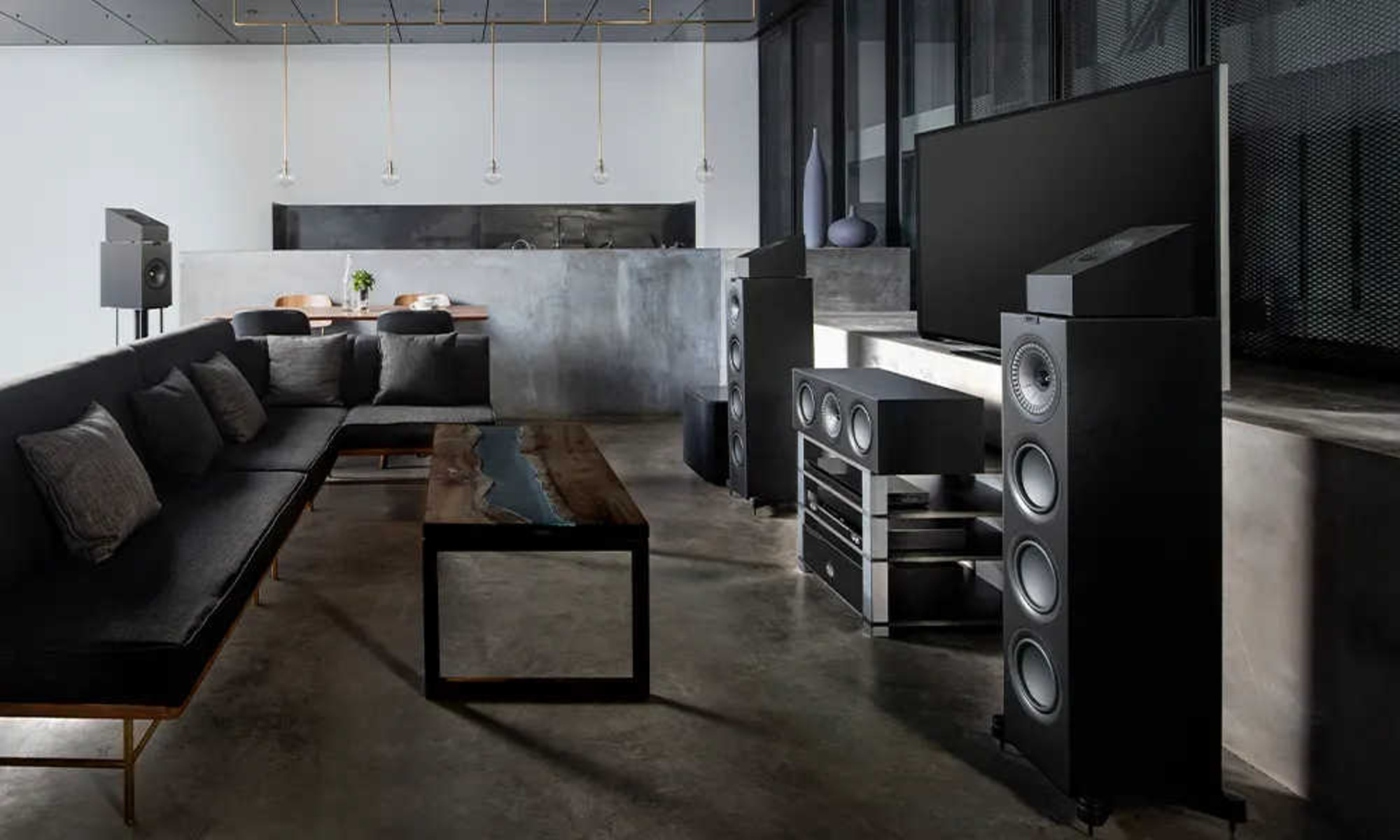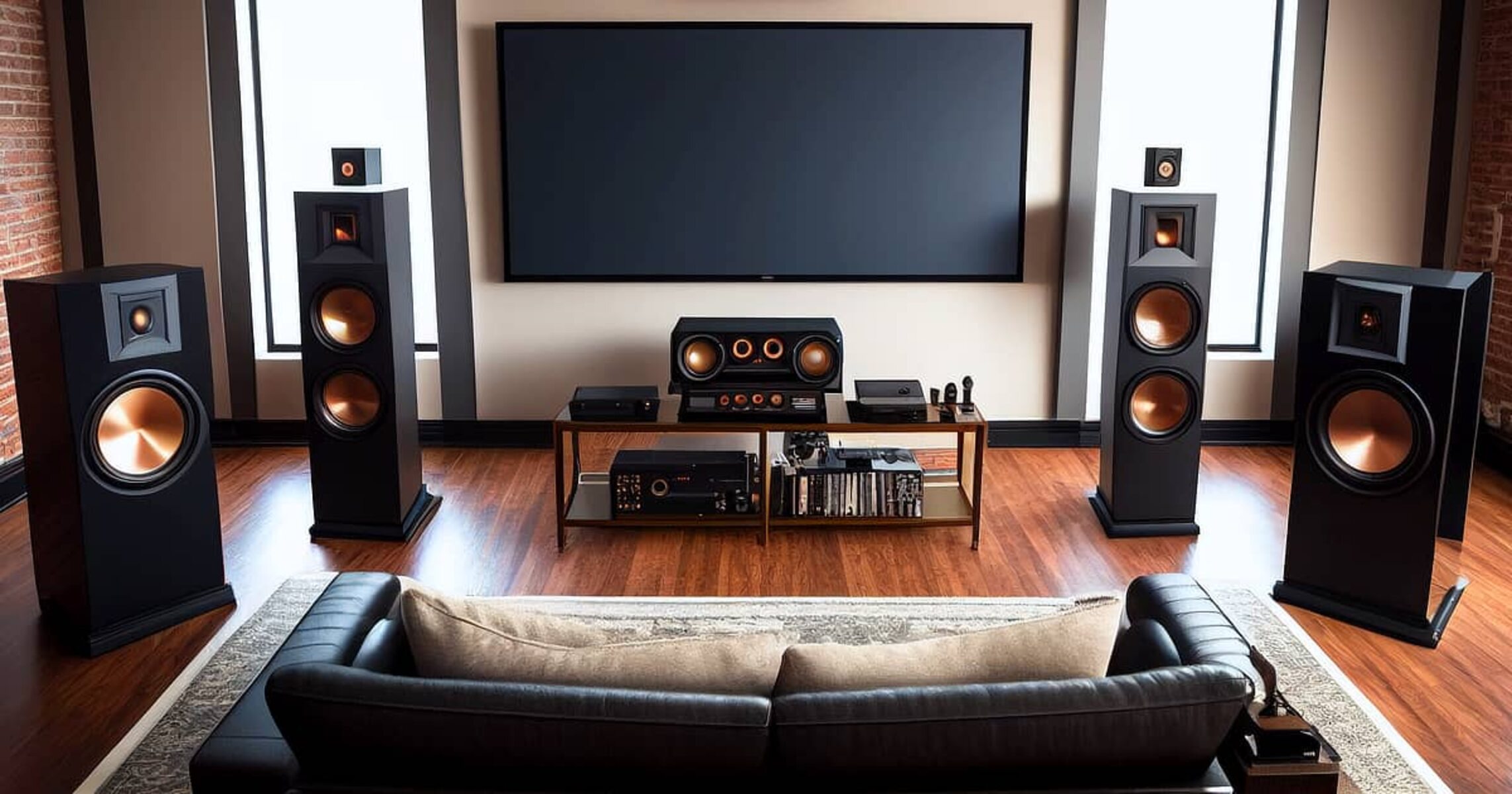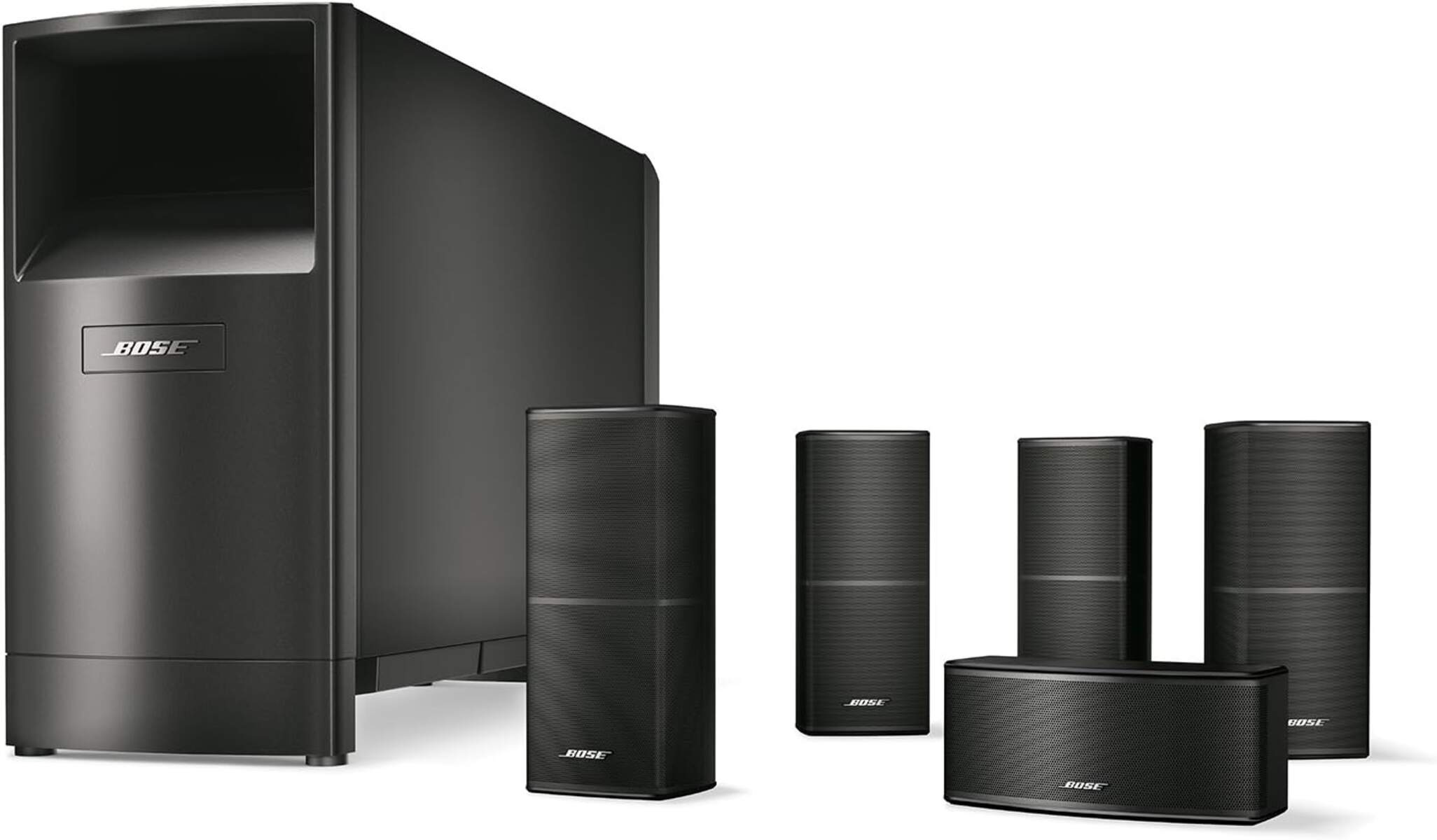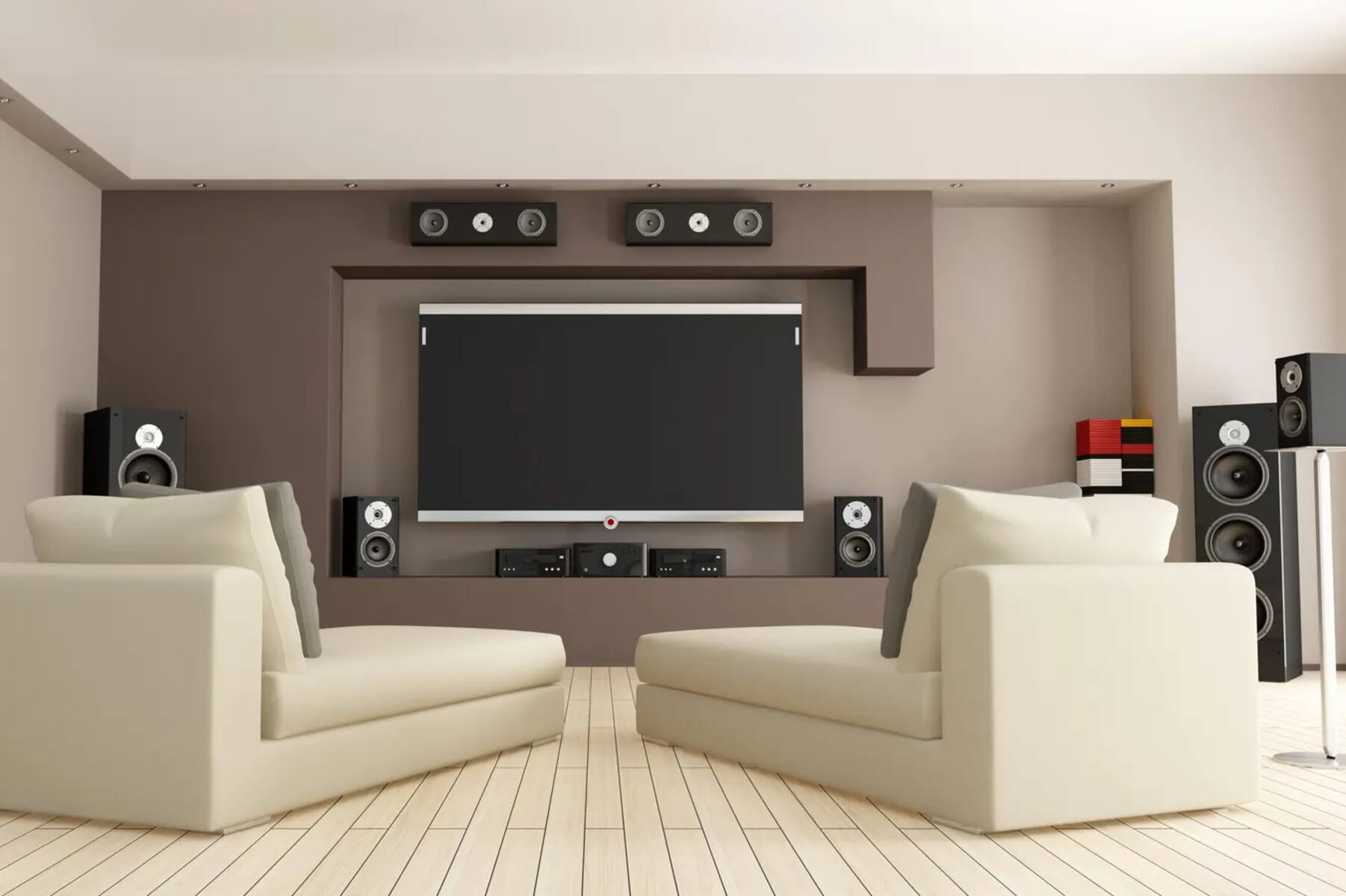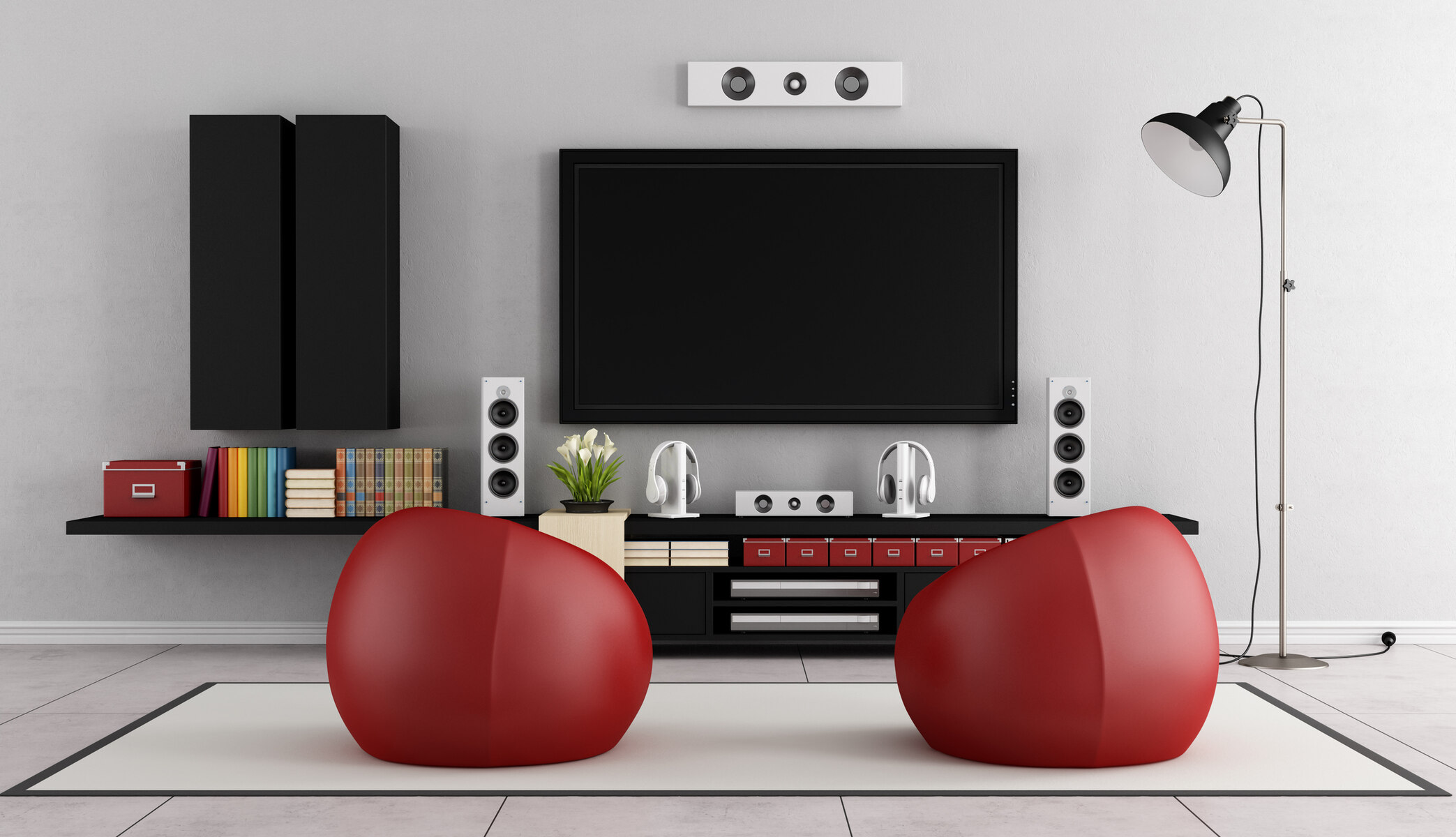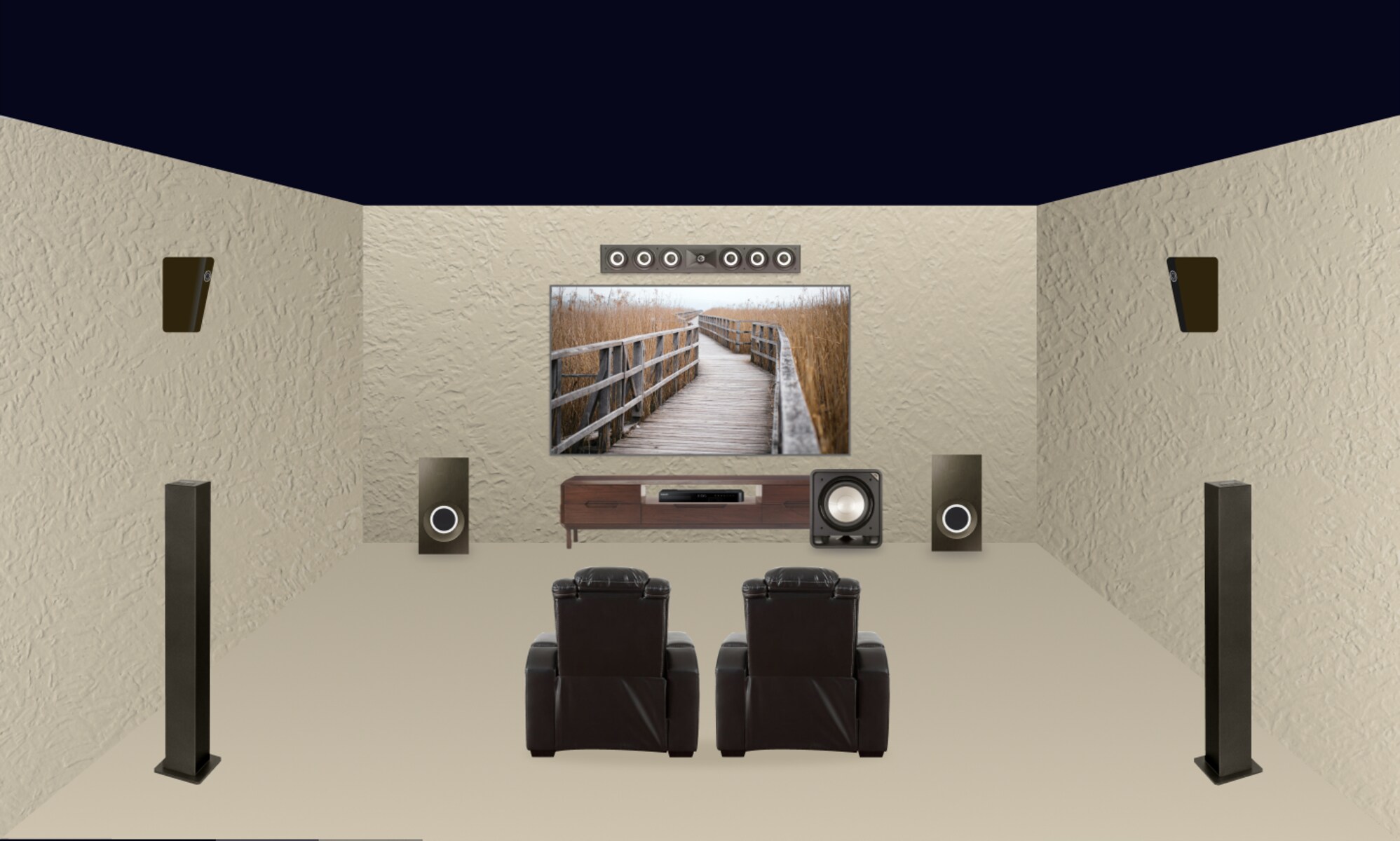Introduction
A surround sound system is a must-have for any audio enthusiast or movie lover looking to take their entertainment experience to the next level. Whether you’re a fan of action-packed blockbusters or enjoy immersing yourself in the world of music, a high-quality surround sound system can enhance your audio experience, making you feel like you’re right in the middle of the action or front row at a live concert.
But what exactly is surround sound? Surround sound refers to a system that creates a three-dimensional audio experience by utilizing multiple speakers strategically placed around the room. This immersive audio technology aims to replicate the way we hear sounds in real life, generating a more realistic and engaging listening experience.
With the evolution of home entertainment systems, surround sound has become increasingly popular and accessible. Gone are the days of mono or stereo sound; today, you can bring the cinema experience right into your living room with a well-designed and properly set up surround sound system.
In this article, we will explore the different types of surround sound systems available, factors to consider when choosing one, and top brands that offer exceptional audio quality. We will also provide tips on how to set up your system effectively and maximize the sound quality for an immersive audio experience.
So, whether you’re a movie buff, a music lover, or someone who wants to elevate their audio experience, let’s dive in and explore everything you need to know about finding the best surround sound system for your needs.
What Is Surround Sound?
Surround sound is an audio technology that creates a multidimensional and immersive sound experience by utilizing multiple speakers placed strategically around the room. Unlike traditional stereo sound, which is delivered through two front speakers, surround sound systems have additional speakers placed at the sides, back, and even above the listener.
The primary goal of surround sound is to create a more realistic audio experience that simulates the way we hear sounds in real life. By using multiple speakers and advanced audio processing techniques, surround sound systems can make you feel like you’re right in the middle of the action, whether you’re watching a movie, playing video games, or listening to music.
One of the key elements of surround sound is the concept of sound localization. With stereo sound, the audio is typically panned between the left and right speakers, giving the illusion of sound movement. Surround sound takes this a step further by allowing for precise placement of sounds around the listener, creating a sense of depth and immersion.
Most surround sound systems use a configuration known as 5.1, which consists of five main speakers and a subwoofer. The five main speakers typically include a center speaker, two front speakers (left and right), and two surround speakers (left and right). The subwoofer is responsible for reproducing the deep bass frequencies, adding impact and depth to the audio.
Advanced surround sound systems, such as 7.1 or 9.1 configurations, incorporate additional speakers for an even more immersive experience. These systems may include additional side or overhead speakers, further enhancing the spatial audio effects.
Surround sound technology is not limited to home entertainment systems. It is commonly used in movie theaters, gaming setups, and even some virtual reality applications, enhancing the overall audio experience and creating a more engaging and lifelike atmosphere.
Now that we understand what surround sound is and how it works, let’s explore why you might need a surround sound system and the benefits it can bring to your entertainment setup.
Why Do You Need a Surround Sound System?
A surround sound system can greatly enhance your audio experience, whether you’re watching movies, playing video games, or listening to music. Here are some compelling reasons why you might need a surround sound system:
- Immersive Movie Experience: A surround sound system allows you to truly immerse yourself in movies, creating a cinematic experience in the comfort of your own home. With speakers positioned strategically around the room, you’ll feel like you’re in the middle of the action, hearing every detail and sound effect with precision and clarity.
- Enhanced Gaming: For gamers, a surround sound system can provide a competitive advantage and an immersive gaming experience. Surround sound allows you to hear in-game audio cues, such as footsteps or incoming enemy fire, with greater accuracy, giving you a tactical edge. With surround sound, you’ll feel fully immersed in the virtual world of your favorite games.
- Music Listening Experience: If you’re a music lover, a surround sound system can breathe new life into your favorite tracks. By creating a wider soundstage, surround sound systems can replicate the feeling of being in a concert hall, with instruments and vocals coming from different directions. This adds depth and realism to your music, allowing you to hear every nuance and detail.
- Home Theater Atmosphere: Transform your living room into a home theater with a surround sound system. With strategically positioned speakers, you’ll experience a true surround sound environment that brings movies, TV shows, and sports events to life. The deep bass tones from the subwoofer will also add impact and intensity to action-packed scenes, immersing you in the on-screen action.
- Family Entertainment: A surround sound system can enhance family entertainment activities, creating a shared and enjoyable audio experience for everyone. Whether you’re watching a family movie night or playing interactive games together, the immersive audio provided by surround sound will heighten the overall enjoyment and make it a memorable experience for everyone involved.
Overall, a surround sound system offers a level of immersion and audio quality that cannot be replicated with traditional stereo speakers. It elevates your home entertainment experience, creating a dynamic and captivating audio environment. By investing in a surround sound system, you can take your entertainment setup to new heights and enjoy a truly immersive audio experience.
Factors to Consider When Choosing a Surround Sound System
When it comes to choosing a surround sound system, there are several factors to consider to ensure you find the one that best suits your needs and preferences. Here are some key factors to keep in mind:
- Room Size: The size of your room plays a crucial role in determining the type of surround sound system that would work best. Larger rooms may require more powerful speakers to fill the space with sound, while smaller rooms may benefit from compact systems that still deliver impressive audio quality.
- Speaker Configuration: Surround sound systems come in various configurations, such as 5.1, 7.1, or 9.1. Consider the number of speakers you want in your setup and whether you prefer overhead or side speakers for a more immersive experience. Keep in mind that more speakers generally mean a more immersive audio experience, but they also require additional space and investment.
- Audio Quality: Look for a surround sound system that delivers high-quality audio. Pay attention to the frequency response, power output, and sound clarity of the speakers. It’s important to listen to the system before making a purchase, if possible, to ensure it meets your expectations in terms of audio performance.
- Compatibility: Check whether the surround sound system is compatible with your existing audio equipment, such as your TV, Blu-ray player, or gaming console. Ensure that the system has the necessary inputs and supports the audio formats you desire, such as Dolby Digital or DTS.
- User-Friendly Features: Consider the ease of use and convenience features of the surround sound system. Look for systems with intuitive controls, easy setup processes, and wireless connectivity options. Features like Bluetooth, Wi-Fi, and mobile app compatibility can enhance your user experience and make it more convenient to control and stream audio.
- Budget: Determine your budget for a surround sound system and consider the options available within that price range. While there are premium systems with advanced features and exceptional audio quality, there are also budget-friendly options that can still provide an immersive audio experience.
- Brand Reputation: Research reputable brands that are known for their high-quality audio products. Look for brands with a good track record in terms of customer satisfaction, reliability, and after-sales support. Reading customer reviews and seeking recommendations can help you make an informed decision.
By considering these factors, you can narrow down your options and select a surround sound system that meets your requirements and aligns with your preferences. Remember to consider the specific needs of your space and your desired audio experience to find the perfect setup for your home entertainment system.
Types of Surround Sound Systems
There are several types of surround sound systems available on the market, each offering a unique audio experience. Understanding the different types can help you choose the one that best suits your needs and preferences. Here are some common types of surround sound systems:
- 5.1 Surround Sound: This is the most common and popular surround sound configuration. It consists of five main speakers – a center speaker, left and right front speakers, and left and right surround speakers – along with a subwoofer. The center speaker reproduces dialogue and enhances movie clarity, while the front and surround speakers create a wide soundstage. The subwoofer delivers deep bass for impactful low-frequency effects.
- 7.1 Surround Sound: The 7.1 configuration builds upon the 5.1 setup by adding two additional surround speakers. These extra speakers, usually placed at the sides of the listener, enhance the spatial audio effects and provide a more immersive experience. The 7.1 setup is ideal for larger rooms or for those who want a more enveloping audio experience.
- 9.1 Surround Sound: For the ultimate immersive audio experience, the 9.1 surround sound system adds two more overhead speakers to the 7.1 setup. These speakers create a three-dimensional sound field, allowing for precise audio placement. With this configuration, sound can be heard coming from above, adding a new level of realism to movies, games, and music.
- Soundbar Systems: Soundbars are a popular choice for those who want a simplified and compact surround sound solution. A soundbar system typically consists of a single long speaker that serves as a center channel, left, and right speaker. Some soundbars also come with wireless subwoofers for added bass impact. While they may not provide the same level of immersion as multi-speaker setups, soundbars offer convenience and space-saving benefits.
- Dolby Atmos Systems: Dolby Atmos is an advanced audio technology that adds a height dimension to the surround sound experience. With Dolby Atmos, sound can be precisely placed and moved in three-dimensional space, including overhead. This creates a truly immersive and lifelike audio environment. Dolby Atmos systems can come in various configurations, including 5.1.2, 7.1.4, or even more elaborate setups with additional speakers.
- Wireless Surround Sound Systems: Wireless surround sound systems offer the convenience of eliminating the need for running speaker wires throughout the room. These systems use wireless connectivity to communicate between the speakers and the main audio source. They can be a great option for those who prefer a cleaner and more flexible installation process.
Each type of surround sound system has its own benefits and considerations. Consider factors such as your room size, desired audio experience, and budget when choosing the type that best suits your needs. Remember, the goal is to create an immersive audio environment that enhances your home entertainment experience.
Top Brands for Surround Sound Systems
When it comes to choosing a surround sound system, opting for a trusted and reputable brand can ensure that you get a high-quality audio experience. Here are some top brands known for their exceptional surround sound systems:
- Sony: Sony is a renowned name in the electronics industry and offers a wide range of surround sound systems to suit different budgets and preferences. Their systems are known for their excellent audio quality, advanced features, and sleek designs. Sony’s surround sound systems often come with wireless connectivity options and support for popular audio formats.
- Bose: Bose is synonymous with premium audio products, and their surround sound systems are no exception. Known for their superior sound quality and sleek aesthetics, Bose systems provide immersive and detailed audio experiences. Bose offers a variety of options, including soundbars and multi-speaker setups, to cater to different room sizes and design preferences.
- Yamaha: Yamaha is a trusted brand in the audio industry, famous for their expertise in audio engineering. Their surround sound systems deliver balanced and dynamic sound, making them a popular choice among enthusiasts. Yamaha offers a range of configurations and features to suit various setups, and their systems often come with user-friendly interfaces for easy control.
- DENON: DENON is renowned for its high-performance audio equipment, including surround sound systems. Their systems are known for their exceptional sound quality, precise audio placement, and extensive connectivity options. DENON offers a range of configurations, from compact soundbar systems to full-fledged multi-speaker setups, catering to different preferences and room sizes.
- JBL: JBL is a well-respected brand in the audio industry, known for its powerful and immersive sound. Their surround sound systems offer a combination of impactful bass, clear vocals, and detailed audio reproduction. JBL systems come in various configurations and are designed to deliver a rich and cinematic audio experience, whether you’re watching movies or enjoying music.
- Klipsch: Klipsch is known for its high-fidelity audio products, and their surround sound systems are highly regarded by audio enthusiasts. Klipsch systems are praised for their detailed and immersive soundstage, delivering a lifelike audio experience. Whether you opt for a multi-speaker setup or a soundbar system, Klipsch surround sound systems are known for their powerful and dynamic audio reproduction.
These are just a few of the top brands worth considering when it comes to surround sound systems. Each brand offers its unique audio signature and product lineup. It’s essential to explore different models, read reviews, and listen to the systems whenever possible to determine which brand and system align with your preferences and budget. Remember to consider factors such as audio quality, features, and compatibility with your existing equipment when making your decision.
How to Set Up a Surround Sound System
Setting up a surround sound system may seem intimidating, but it can be a straightforward process if you follow the right steps. Here’s a general guide on how to set up a surround sound system:
- Plan Your Layout: Before you start setting up your system, plan the layout of your speakers. This involves determining the best placement for each speaker, considering factors such as the size of the room and the seating arrangement. Consult the user manual of your specific surround sound system for speaker placement recommendations.
- Connect Your Source Devices: Connect your source devices, such as your TV, Blu-ray player, or game console, to the audio receiver using HDMI, optical, or analog cables. Ensure that the audio settings on your source devices are configured correctly to output sound to the surround sound system.
- Connect the Speakers to the Receiver: Connect each of the speakers to the corresponding speaker outputs on the audio receiver. Ensure that you connect the center speaker, front speakers, surround speakers, and subwoofer to their designated channels. Use the provided speaker wires or cables and make sure they are securely connected.
- Configure Audio Settings: Access the audio settings on your audio receiver and configure them based on your speaker setup. Set the appropriate speaker size, crossover frequency, and volume levels. Many audio receivers have an automated calibration feature that can help optimize the audio settings for your specific room and speaker configuration.
- Position the Subwoofer: Place the subwoofer in a suitable location within the room. The ideal placement is often near the front of the room, but experimentation may be required to find the optimal position that delivers a balanced and impactful bass response.
- Perform Sound Testing: Test the sound system by playing audio content that showcases different aspects of the surround sound experience, such as movies with dynamic sound effects or music with various instruments. Pay attention to the sound quality, balance, and spatial imaging of the audio. Make adjustments to the speaker positions or audio settings as needed to optimize the sound quality.
- Manage Cable Routing: Conceal and manage the speaker wires and cables to create a clean and organized setup. This can be done using cable management solutions, such as cable raceways or wire clips, to hide the wires along walls or under carpeting.
- Fine-Tune and Enjoy: Once your surround sound system is set up and optimized, fine-tune the audio settings to your preferences. Experiment with different audio modes, such as movie or music presets, to further enhance your audio experience. Sit back, relax, and enjoy the immersive sound that your surround sound system provides.
Keep in mind that these steps provide a general overview of setting up a surround sound system. It’s essential to refer to the user manual and specific instructions for your particular system, as the process may vary. Additionally, if you’re unsure about any aspect of the setup, consider consulting professional installers or seeking guidance from knowledgeable individuals to ensure an optimal setup for your surround sound system.
Tips for Getting the Best Sound Quality
Getting the best sound quality from your surround sound system involves a combination of proper setup and optimization. Here are some tips to help you achieve optimal sound quality:
- Room Acoustics: Pay attention to the acoustics of your room. Hard surfaces can cause sound reflections and echo, while soft surfaces can absorb sound. Consider adding acoustic treatments such as carpets, curtains, or wall panels to minimize reflections and create a more balanced sound environment.
- Speaker Placement: Position your speakers accurately according to the manufacturer’s recommendations. Ensure that they are aimed towards the listening area and placed at equal distances from the primary listening position. This helps create a consistent and immersive soundstage.
- Subwoofer Placement and Calibration: Experiment with the placement of your subwoofer to find the optimal position that delivers the best bass response. Consider using a subwoofer calibration tool or following the instructions in your audio receiver’s manual to adjust the subwoofer volume and crossover settings for seamless integration with the other speakers.
- Speaker Distance and Level Calibration: Use an audio calibration system or manual measurement to ensure that each speaker is properly balanced in terms of distance and volume level. This helps create a cohesive soundstage and ensures that sound effects move smoothly across the speakers.
- Audio Source Quality: Use high-quality audio sources to fully utilize the capabilities of your surround sound system. Opt for Blu-ray discs, streaming services, or audio files that are encoded in high-resolution formats to ensure optimal audio quality.
- Experiment with Audio Modes: Explore the various audio modes and settings offered by your audio receiver. Experiment with different presets to find the one that best suits your content and personal preferences. For example, movie modes are ideal for watching films, while music modes can enhance the audio experience when listening to music.
- Regular Maintenance: Keep your surround sound system clean and free from dust. Dust and debris can impair the performance of speakers and affect audio quality. Regularly inspect and clean your speakers, subwoofer, and audio receiver to ensure optimal performance.
- Upgrade Your Cables: Consider investing in high-quality audio cables to ensure a clean and clear signal transfer between your audio source and the speakers. Look for cables with thick shielding and high conductivity to minimize signal loss and interference.
- Room Calibration Software: Some audio receivers come with built-in room calibration software that can analyze your room acoustics and automatically adjust audio settings to optimize sound quality. Take advantage of this feature to achieve the best possible audio performance.
By following these tips, you can maximize the sound quality of your surround sound system and create an immersive audio experience. Experiment with different settings, placement options, and audio sources to find the setup that delivers the most enjoyable and accurate sound reproduction.
Conclusion
A surround sound system can transform your home entertainment experience, immersing you in a world of vibrant and lifelike audio. Whether you’re watching movies, playing games, or listening to music, a well-designed and properly set up surround sound system can elevate your audio experience to new heights.
In this article, we discussed what surround sound is and its ability to create a three-dimensional audio experience. We also explored the benefits of having a surround sound system, including the immersive movie experience, enhanced gaming, and the ability to reproduce music with depth and realism.
We looked at important factors to consider when choosing a surround sound system, such as room size, speaker configuration, audio quality, compatibility, user-friendly features, and budget. Additionally, we examined some of the top brands that offer exceptional surround sound systems, including Sony, Bose, Yamaha, DENON, JBL, and Klipsch.
We provided guidelines on how to set up a surround sound system, covering steps like planning the layout, connecting source devices, configuring audio settings, and managing speaker cables. We also offered tips for achieving the best sound quality, such as considering room acoustics, optimizing speaker placement, and experimenting with audio modes.
By following these tips and guidelines, you can create a captivating audio environment that brings your favorite movies, games, and music to life. Remember to choose a surround sound system that suits your needs and preferences, and don’t hesitate to seek professional help or guidance if needed.
Now, armed with the knowledge and understanding of surround sound systems, it’s time to take the leap and transform your audio experience. Immerse yourself in the world of rich, detailed, and enveloping sound – a world where every whisper, explosion, and musical note is brought to life around you.







